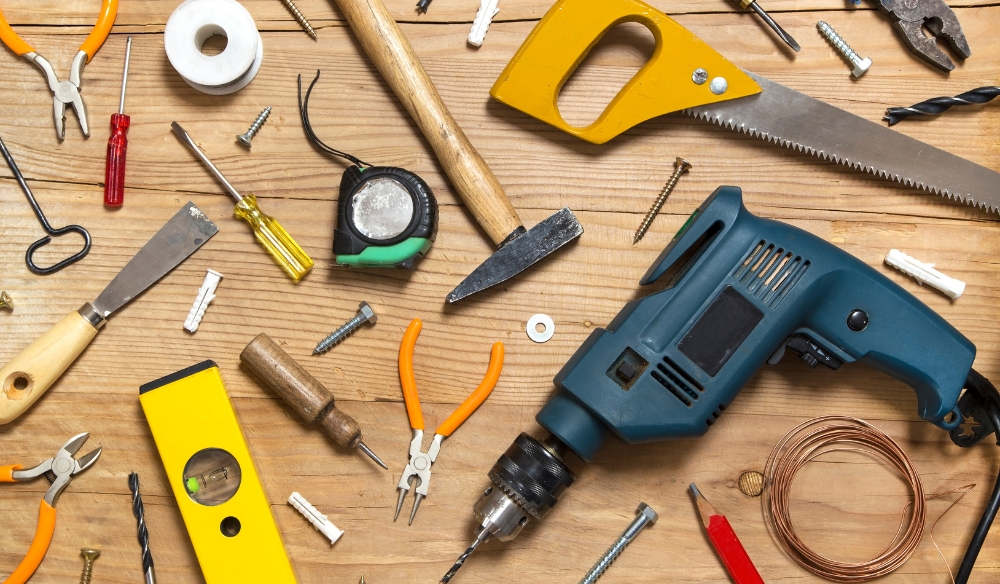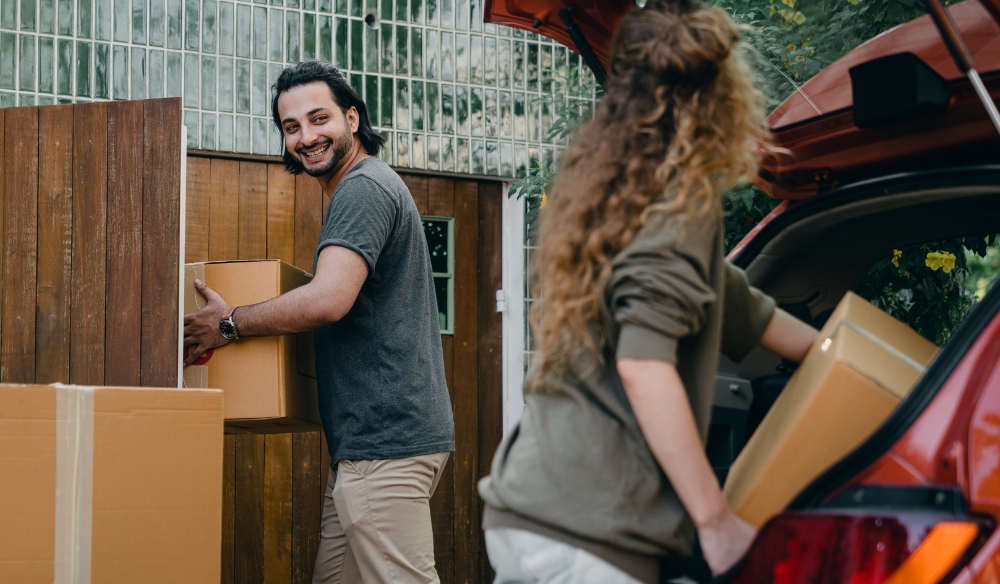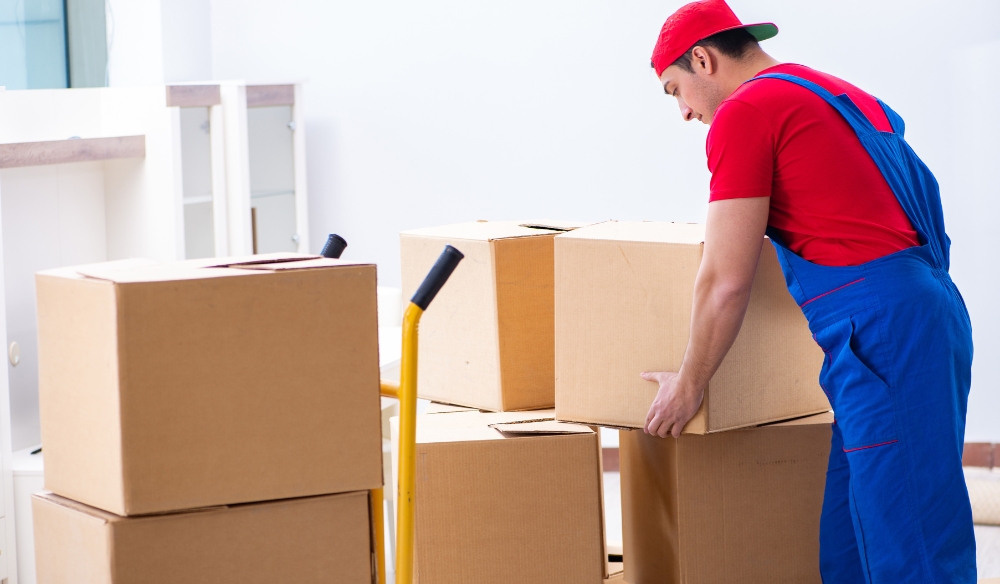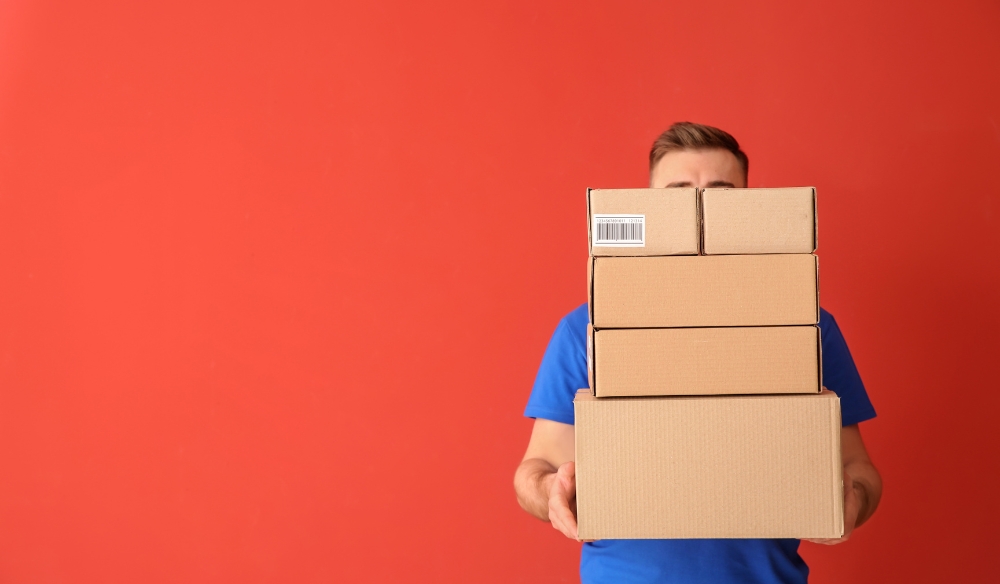Moving house can feel like an overwhelming task, packed with endless boxes and unknown hurdles. Trust us, we’ve been there before; navigating through a sea of belongings while juggling various tasks can be quite daunting.
That’s why our comprehensive guide comes in handy, filled with expert tips and tricks to transform your moving process into an organised, stress-free experience.
Ready for the smoothest move you’ve ever had? Let’s dive in!
Key Takeaways
- Decluttering before a move can make the process more manageable and less stressful.
- Creating a moving folder with all important documents and checklists can keep you organised throughout the relocation process.
- Packing in advance, booking moving services early, and scheduling utilities for your new place are essential steps for a smooth and stress-free move.
- Using appropriate box sizes, organising items by room, labelling boxes clearly, securely taping them, and packing fragile items with care are crucial packing tips for a successful move.
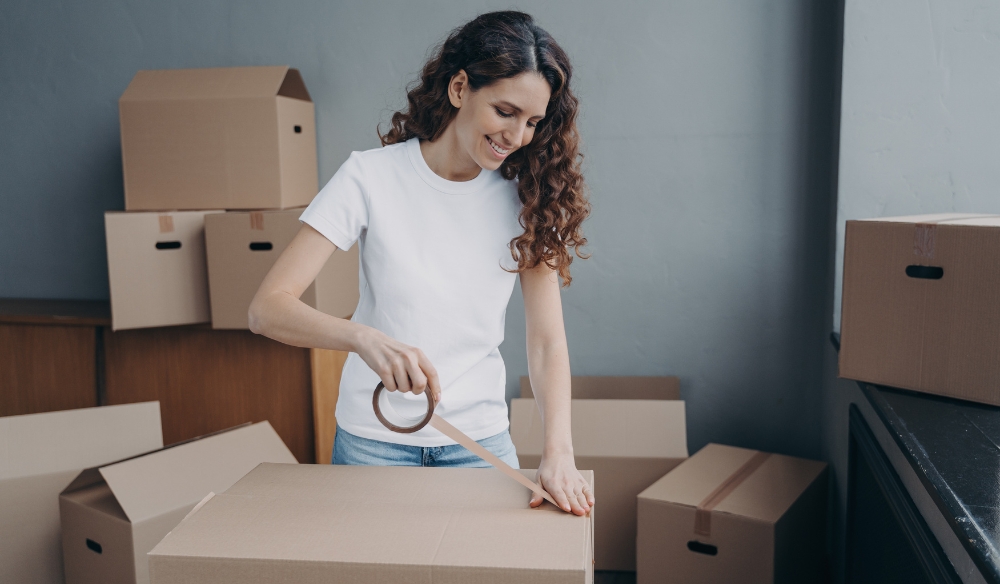
Preparing for the Move
To prepare for the move, declutter by getting rid of unnecessary items, create a moving folder to keep important documents organised, pack in advance to avoid last-minute stress, book moving services early for convenience, schedule utilities for the new place ahead of time, and keep essential items with you during the move.
Get rid of unnecessary items
Starting the moving process with a thorough decluttering is one of our top recommendations. This key step frees up space and reduces the overall packing load, making your move more manageable and less stressful.
So, before you even start searching for boxes or wrapping materials, take a good look at everything you own. Sort through each room methodically – those unused gym gear gathering dust in the closet, old books on shelves and forgotten kitchen gadgets tucked away in drawers.
Be ruthless—anything that’s not used regularly or holds significant sentimental value might just be adding unnecessary weight to your move. Sell, donate or recycle these items if possible; it’s not only environmentally friendly but could also earn you some extra cash! Trust us—it will make a huge difference on moving day when there are fewer boxes to lift and unpack.
Create a moving folder
One important step in preparing for a successful move is to create a moving folder. This will serve as your central hub for all the essential documents, contacts, and information related to your relocation.
As you gather paperwork such as lease agreements, contracts with movers or storage units, or utility bills, organise them neatly within the folder for easy access.
Additionally, include any notes or checklists that you have created along the way. These could be reminders of tasks to complete before the move or a checklist of items to pack in each room.
Having everything in one place will save you time and reduce stress when you need to refer back to important details during the process.
Pack in advance
One of the key tips for a successful move is to pack in advance. By giving yourself enough time to pack, you can avoid the stress and last-minute rush that often comes with moving.
Start by gathering all the necessary packing supplies such as boxes, bubble wrap, and tape. Then, go room by room and carefully pack your belongings, making sure to label each box with its contents and destination in your new home.
Packing in advance allows you to stay organised and ensures that everything is packed securely before the big day arrives. So start early and give yourself plenty of time to make this process smooth and efficient.
Book moving services early
One key step to ensuring a successful move is to book your moving services early. By doing so, you’ll have peace of mind knowing that professionals will be available on your preferred moving date.
Additionally, booking in advance can help you secure better rates and avoid any last-minute availability issues. Remember, popular moving dates tend to fill up quickly, especially during peak seasons.
So, don’t wait until the last minute – plan ahead and make your arrangements as soon as possible for a smooth and stress-free move.
Schedule utilities for the new place
Once you have finalised your new place, it’s crucial to schedule utilities for a smooth and hassle-free transition. Make sure to contact the necessary service providers well in advance to ensure that electricity, gas, water, internet, and other utilities are set up and ready to go on a moving day.
This will help you avoid any last-minute surprises or delays when you arrive at your new home. By scheduling utilities ahead of time, you can focus on unpacking and settling into your new space without any interruptions or inconveniences.
Keep essentials with you
As you prepare for your move, it’s important to keep essentials with you to ensure a smooth transition. These are items that you’ll need immediate access to once you arrive at your new home.
This can include important documents, such as passports, identification cards, and medical records. You may also want to keep valuable or sentimental items close by, like jewellery or family heirlooms.
In addition, consider packing a bag with essential toiletries and a change of clothes for each family member. This way, everyone will have what they need without having to dig through boxes right away.
It’s also a good idea to pack some basic cleaning supplies so that you can freshen up your new space before unpacking.

Packing Tips for a Successful Move
When packing for a successful move, it’s important to use appropriate box sizes and organise items by room, making the unpacking process easier. Label boxes clearly and securely tape them to avoid any mishaps during transportation.
Take special care with fragile items, electronics, appliances, artwork, and photographs. Efficiently pack clothing and shoes to maximise space. These packing tips will ensure a smooth transition into your new home.
Use appropriate box sizes
When it comes to packing for your move, using appropriate box sizes is crucial. Opting for boxes that are too large can result in heavy and difficult-to-handle loads, while choosing boxes that are too small may lead to items getting damaged or not fitting properly.
To ensure a successful move, make sure to select box sizes that are suitable for the items you plan on packing. This will help you maximise space efficiency and protect your belongings during transportation.
Remember, using the right-sized boxes will make the entire moving process much smoother and less stressful.
Organise items by room
When it comes to packing for a move, organising your items by room can be a game-changer. It not only makes the packing process more efficient but also ensures that unpacking is a breeze once you arrive at your new home.
Start by going through each room and sorting items according to their respective spaces. This way, when you start packing, you can focus on one area at a time, making it easier to keep track of what’s already been packed and what still needs to be done.
Label each box with the name of the room it belongs in, and consider colour-coding them for even easier identification. By organising items by room, you’ll save yourself valuable time and energy during both the packing and unpacking stages of your move.
Label boxes clearly
One of the most important steps in DIY packing for a successful move is to label boxes clearly. This simple task can save you a lot of time and frustration when it comes to unpacking in your new home.
Use markers or labels to clearly identify the contents of each box and which room they belong to. Not only will this help you easily locate specific items later, but it will also make it easier for your removalists to know where each box should be placed in your new space.
Take an extra few seconds during the packing process to label each box accurately, ensuring a smooth transition from old home to new.
Securely tape boxes
To ensure the safety of your belongings during the moving process, securely taping boxes is essential. Use high-quality packing tape and apply it along all seams of the box to prevent any potential damage or opening during transit.
Be sure to reinforce the bottom of each box with extra layers of tape for added strength. Additionally, consider double-taping boxes containing heavy items or fragile possessions for extra protection.
By taking these precautions, you can have peace of mind knowing that your boxes are securely sealed and ready for a successful move. Remember, properly taped boxes will make unpacking a breeze when you arrive at your new home!
Pack fragile items with care
When it comes to packing fragile items, extra care is essential to ensure they arrive at your new home in one piece. Start by gathering appropriate packing materials such as bubble wrap, packing paper, and sturdy boxes.
Wrap each fragile item individually with multiple layers of bubble wrap or packing paper, paying special attention to corners and delicate parts. Use additional padding like foam peanuts or crumpled paper for added protection inside the box.
Make sure you label these boxes as “fragile” on all sides, so movers are aware of their delicate contents. When loading the moving truck, place fragile items on top or in a secure space where they won’t be crushed by heavier items.
Properly pack electronics and
appliances
When packing electronics and appliances for your move, it’s crucial to take the necessary precautions to ensure their safe transportation. Start by disconnecting all cables and accessories and labelling them accordingly.
Wrap delicate items like TVs and computer monitors in bubble wrap or blankets to protect them from scratches or damage during transit. For smaller devices like gaming consoles or DVD players, pack them in sturdy boxes with ample padding using packing paper or foam inserts.
Remember to secure each box with tape to prevent shifting during the move. Lastly, don’t forget to remove any batteries from electronic devices to avoid potential leaks or corrosion while on the road.
Take special care of artwork and
photographs
When packing artwork and photographs for a move, it’s crucial to handle them with care to ensure they arrive at your new home in pristine condition. Start by gathering the necessary packing materials such as acid-free tissue paper, bubble wrap, and sturdy moving boxes.
Wrap each piece individually in acid-free tissue paper or glassine paper to protect against scratches and moisture. For framed artwork, consider using corner protectors or cardboard sleeves for added protection.
When placing the wrapped pieces in the moving box, make sure they fit snugly but not too tightly. Fill any empty spaces with crumpled packing paper or bubble wrap to prevent shifting during transportation.
Label the boxes as “fragile” and indicate which direction they should be kept upright.
For valuable or irreplaceable artworks, you may want to consider seeking professional assistance from art movers who specialise in handling delicate items. They have the expertise and equipment necessary to properly pack and transport precious pieces.
Pack clothing and shoes efficiently
When it comes to packing clothing and shoes for your move, efficiency is key. Start by decluttering your wardrobe and getting rid of any items you no longer wear or need. This will not only lighten your load but also make unpacking at the new place much easier.
For clothes, consider using vacuum-sealed bags or rolling them tightly to maximise space in your boxes. Keep delicate or special garments separate and pack them carefully to avoid damage.
As for shoes, stuff them with socks or other small items to save space and maintain their shape during transit. Don’t forget to label each box clearly so that you can easily locate your belongings when it’s time to unpack.
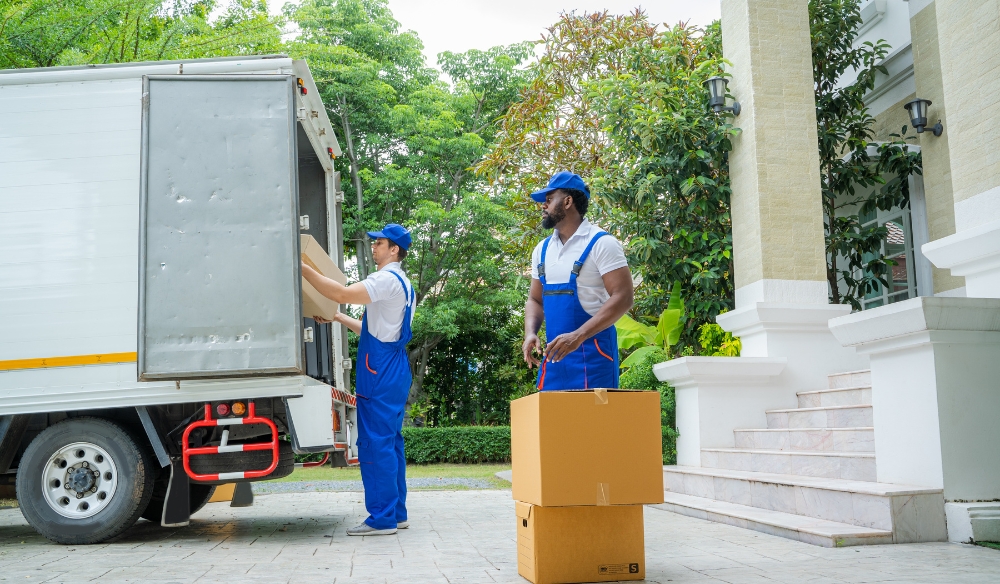
Essential Packing Materials and Equipment
To ensure a successful move, it is essential to have the right packing materials and equipment on hand. This includes sturdy boxes in various sizes, bubble wrap and packing paper for protecting delicate items, reliable packing tape and dispenser for securely sealing boxes, furniture covers and blankets to prevent scratches during transportation, moving dollies and straps for safely moving heavy items, wardrobe boxes for keeping clothing wrinkle-free, as well as specialty packing materials designed specifically for fragile items.
Boxes
Boxes are a fundamental packing material when it comes to moving. They come in various sizes and types, making them versatile for different items. Small boxes are ideal for heavy items like books, while larger ones are perfect for lighter belongings such as linens or pillows.
Using appropriate box sizes helps prevent overpacking and ensures that the boxes can be easily carried or loaded onto a moving truck. Additionally, sturdy corrugated cardboard boxes provide reliable protection during transportation.
It’s important to reinforce the bottom of each box with packing tape to avoid any mishaps when lifting or stacking them. Labelling each box clearly with its contents and designated room will make unpacking a breeze once you complete your move.
Packing materials (bubble wrap, packing
paper, etc.)
When it comes to packing materials, it’s important to have the right supplies on hand to protect your belongings during the move. Bubble wrap is a must-have for wrapping fragile items like glassware and delicate decor.
Its cushioning properties help prevent damage caused by bumps or shifts during transportation. Packing paper is another essential material that can be used to wrap and separate items in boxes, providing an extra layer of protection against scratches and breakage.
Additionally, foam pouches or padding can be used for smaller fragile items like ornaments or electronics. Remember, investing in quality packing materials will save you from potential headaches and expensive replacements later on.
Packing tape and dispenser
One essential item you’ll need for a successful move is packing tape and a dispenser. This handy tool will make your packing process much easier and more efficient. Choose a high-quality tape that is sturdy and durable to ensure that it securely seals your boxes during transportation.
A dispenser makes it convenient to apply the tape smoothly without any hassle or mess. It’s important to have enough tape on hand, as running out can cause unnecessary delays in your packing progress.
So be sure to stock up on plenty of tape before you start packing! Remember, using good quality packing tape and a dispenser will give you peace of mind knowing that your belongings are properly sealed and protected throughout the entire moving process.
Furniture covers and blankets
To ensure the safe transportation of your furniture during a move, it’s essential to invest in high-quality furniture covers and blankets. These protective materials act as a shield against scratches, dents, and other damages that can occur during transit.
By securely wrapping your furniture with covers or blankets, you can provide an extra layer of protection and prevent any potential wear and tear. Not only do they safeguard your valuable pieces from dust and moisture, but they also help to maintain their pristine condition.
Remember to use appropriate-sized covers that fully encompass each item, ensuring complete coverage for optimal protection throughout the entire moving process.
Moving dollies and straps
When it comes to moving heavy items, having the right equipment can make all the difference. That’s where moving dollies and straps come in handy. These tools are designed to help you transport bulky furniture, appliances, and other large items with ease.
Moving dollies have sturdy wheels that allow you to effortlessly roll heavy objects from one place to another, saving you from straining your back or risking injury. Additionally, using straps when securing these items onto the dolly provides an extra layer of stability and prevents them from shifting during transportation.
By utilising moving dollies and straps, you can ensure a safer and more efficient move while minimising the risk of damage to your belongings.
Wardrobe boxes
When it comes to moving, one of the most challenging tasks is packing your clothes. But fear not! Wardrobe boxes are here to save the day. These tall and sturdy boxes are specifically designed to hang your clothing items without them getting wrinkled or damaged during transportation.
Wardrobe boxes have a metal bar across the top where you can easily hang your clothes just like they would be in a closet. This means that you don’t have to fold or pack them into suitcases or regular cardboard boxes, saving you time and effort.
With wardrobe boxes, you can keep your clothes organised and accessible throughout your move. Simply transfer them directly from your closet into these special boxes, keeping them wrinkle-free and ready to wear once you arrive at your new home.
Specialty packing materials
(for fragile items)
To ensure the safety of your fragile items during a move, it’s crucial to use specialty packing materials. These materials provide an extra layer of protection and help prevent damage.
Bubble wrap is one such material that can be wrapped around delicate items like glassware, ceramics, and electronics to safeguard them from any impact or vibration during transportation.
Additionally, packing paper can be used to cushion fragile objects and fill empty spaces in boxes to prevent items from shifting or breaking. By using these specialty packing materials, you can have peace of mind knowing that your delicate belongings will arrive at your new home intact and undamaged.
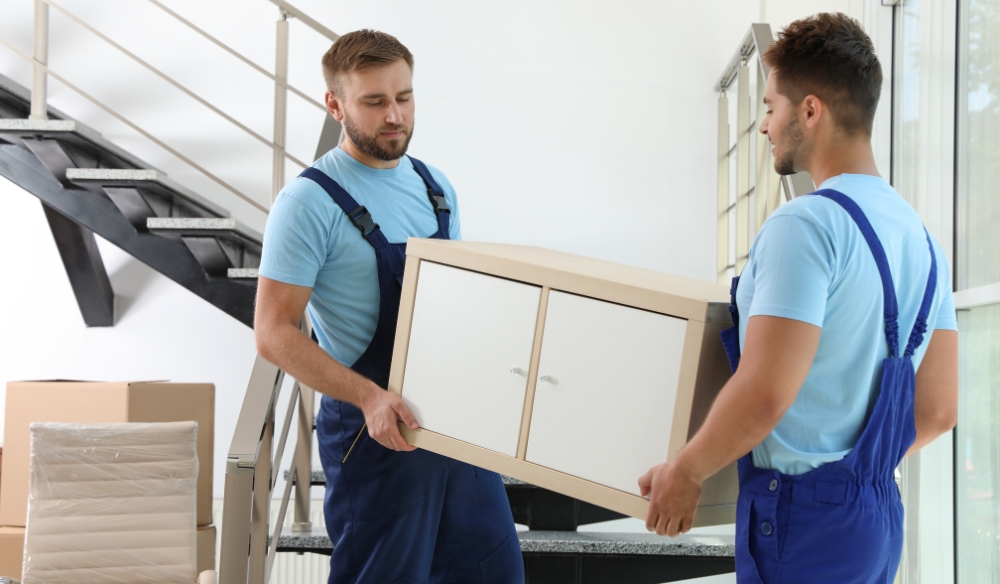
Tips for Moving Furniture and Appliances
Disassemble furniture if possible to make it easier to move. Measure the new space and plan the layout before moving heavy items. Safely transport furniture and appliances using a dolly or straps.
Protect them during transportation with blankets or covers. Securely pack mattresses and box springs to avoid damage during the move.
Disassemble furniture if possible
One of the key tips for a successful move is to disassemble your furniture if possible. This will not only make it easier to pack and transport, but also help prevent any damage during the moving process.
Taking apart larger pieces of furniture such as beds, tables, and bookshelves allows for more efficient use of space in the moving truck and reduces the risk of scratches or breakage.
Remember to keep all necessary screws, bolts, and other small parts organised by placing them in labelled bags or containers. By disassembling your furniture before the move, you can save time and ensure a smoother transition into your new home.
Take measurements and plan the layout
in the new space
When moving to a new space, it’s important to take measurements and plan the layout in advance. This step ensures that your furniture will fit properly and allows you to envision how everything will come together in the new home.
By measuring each room and taking note of any architectural quirks or obstacles, you can avoid surprises on moving days and arrange your belongings more efficiently. Keep in mind factors like doorways, hallways, and ceiling height when planning where to place larger pieces of furniture.
This preparation will save you time and effort during the unpacking process and help create a smooth transition into your new space.
According to experts in the removalist industry, taking measurements before moving is crucial for a successful move. It helps avoid situations where certain items don’t fit through doorways or staircases, ensuring a seamless move-in experience.
Safely move heavy items with a dolly
or straps
To safely move heavy items during your DIY packing and moving process, it’s essential to utilise a dolly or strap. These tools are designed to make transporting bulky and weighty furniture or appliances much easier.
A dolly is especially useful for moving large items like sofas, refrigerators, or washing machines without straining your back. Simply place the item on the dolly, secure it with straps, and maneuver it smoothly to its new location.
Straps can also be used independently to secure items on the dolly or provide extra support when lifting and carrying heavy objects. By using these tools correctly, you can avoid injuries and ensure a smooth transition during your move.
Protect furniture and appliances during
transportation
Our guide wouldn’t be complete without providing tips on how to protect your valuable furniture and appliances during transportation. To ensure their safety, it’s important to take some precautions.
Firstly, consider disassembling any furniture if possible. This not only makes it easier to transport but also reduces the risk of damage. Secondly, take measurements of both your furniture and the new space before moving day so you can plan the layout accordingly.
Safely move heavy items by using a dolly or strap to avoid straining yourself or causing damage. Protective covers and blankets should be used to prevent scratches and dents during transit.
Securely pack and transport mattresses
and box springs
When it comes to moving mattresses and box springs, ensuring they are securely packed and transported is crucial to prevent damage. Start by covering them with mattress bags or protective covers to keep them clean and protect against tears.
Use strong packing tape to secure the covers in place, making sure there are no gaps where dirt or moisture can get in.
Next, carefully load the mattresses and box springs onto a sturdy moving dolly or use straps for easier transportation. Make sure they are tightly secured to avoid any shifting during transit.
If you need to stack them, always place the box springs on the bottom as they provide a solid base.
During transportation, be mindful of sharp turns or sudden stops that could potentially damage your mattress or box spring. Drive cautiously and avoid placing heavy objects on top of them that may cause indentations.
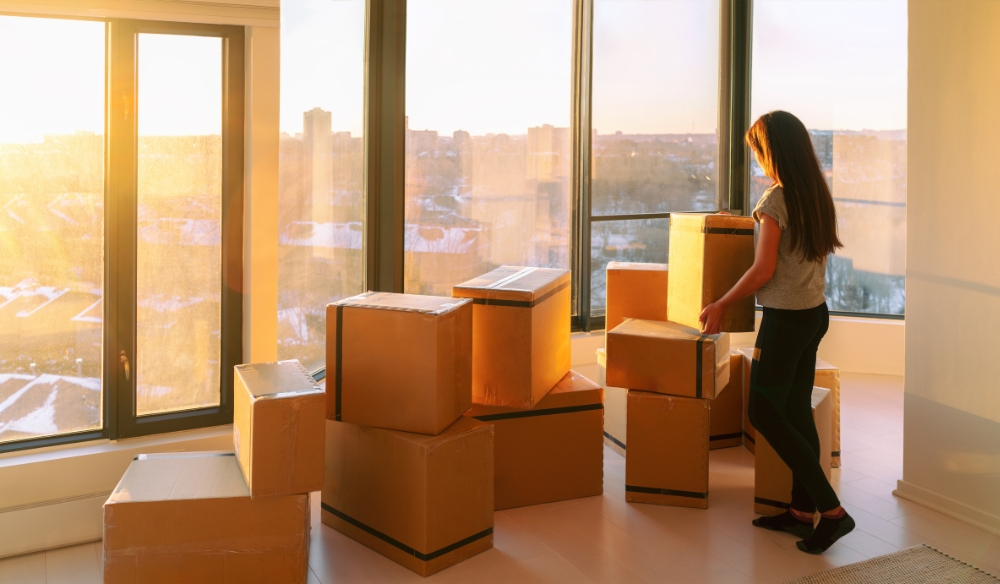
Unpacking and Settling In
Unpacking and settling in involves creating an essentials box, unpacking room by room, setting up furniture first, organising belongings, responsibly disposing of packing materials, completing any necessary installations or repairs, and finally enjoying your new home.
Create an essentials box
One important aspect of DIY packing for a successful move is creating an essentials box. This box should contain all the items you will need immediately upon arriving at your new home, such as toiletries, medications, phone chargers, and a change of clothes.
It’s essential to have these items easily accessible so that you don’t have to search through multiple boxes on your first day in the new place. By prioritising and packing this essentials box separately from the rest of your belongings, you can ensure a smoother transition into your new home without any unnecessary stress or inconvenience.
Unpack room by room
When it comes to unpacking after a move, one of the best strategies is to tackle it room by room. Start with the essentials box you packed before the move, as this will contain items that you’ll need right away.
Once that’s done, focus on one room at a time, starting with the most important rooms like the bedroom and kitchen. Unpacking room by room helps to break down the process into manageable tasks and keeps things organised.
It also allows you to prioritise which rooms need attention first and helps prevent feeling overwhelmed. By approaching unpacking in this way, you can gradually settle into your new home and create a sense of order one space at a time.
Set up furniture and larger items first
When you arrive at your new home, one of the first things you’ll want to do is set up your furniture and larger items. This step is essential to create a sense of familiarity and functionality in your new space.
Start by measuring the rooms and planning where each piece will go. Disassemble any furniture that can be taken apart for easier transportation, and remember to keep all the necessary tools handy.
Safely move heavy items using dollies or straps to avoid injuries or damage. Once everything is in its place, take a moment to appreciate your progress and begin organising the rest of your belongings accordingly.
Organise and arrange belongings in
the new space
Once you’ve arrived at your new home, the next step is to organise and arrange your belongings in the new space. This is an exciting part of the moving process as you get to create a fresh and organised living environment.
Start by unpacking room by room, beginning with essentials like kitchen items and toiletries. As you unpack, consider where each item will best fit in terms of functionality and aesthetics.
If possible, set up furniture and larger items first to create a sense of familiarity in your new surroundings. Take advantage of this opportunity to rearrange or rethink the layout if desired.
Once everything is unpacked and arranged, it’s important to dispose of packing materials responsibly by recycling or reusing them whenever possible.
Dispose of packing materials
responsibly
Once you’ve completed your move and unpacked all your belongings, it’s important to dispose of the packing materials responsibly. Recycling is a great option for boxes and paper materials, as they can be broken down and reused in an environmentally friendly way.
You can also consider donating any reusable materials, such as bubble wrap or packing peanuts, to local schools or community organisations that may need them. Another option is to check with your local waste management facility for proper disposal methods for items like tape or plastic wrap.
By disposing of packing materials responsibly, you’ll not only help reduce waste but also contribute to a greener future.
Completing any necessary installations
or repairs
Once you have arrived at your new place, it’s time to complete any necessary installations or repairs before fully settling in. This step is crucial for ensuring that your new home is safe and functional.
Check the electrical system, plumbing, and heating/cooling units to ensure they are working properly. If any repairs or installations are needed, contact a professional service provider to handle these tasks efficiently.
By addressing these issues promptly, you’ll be able to enjoy your new home without any inconveniences or potential hazards. Remember, taking care of these details early on will help make the transition smoother and more enjoyable overall.
Enjoy your new home!
Congratulations on successfully completing your move! We hope that our comprehensive packing guide has helped make your moving process smooth and stress-free. Now that you’re in your new home, it’s time to take a moment to appreciate the hard work you’ve put into this transition.
Take some time to explore your new surroundings, settle into your comfortable furniture, and enjoy the excitement of starting fresh in a new space.
Remember, while unpacking can sometimes feel overwhelming, it also presents an opportunity for organisation and creating a clutter-free environment. Refer back to our unpacking tips as you start unboxing room by room, setting up furniture and larger items first.
AEZ Moves, we understand that moving to a new home can be both exciting and daunting. That’s why we’ve created this comprehensive guide on DIY packing to help make your move as smooth and stress-free as possible.
With our expert tips and advice, you’ll be able to tackle the packing process with confidence.
From preparing for the move to unpacking and settling into your new space, our guide covers every step of the packing journey. We start by helping you get organised before the move, suggesting actions such as decluttering unnecessary items, creating a moving folder, and booking moving services early.
We also emphasise the importance of scheduling utilities for your new place in advance and keeping essential items with you during the move.
When it comes to actually packing up your belongings, we provide invaluable tips for success. This includes using appropriate box sizes based on item weight and size, organising items by room to simplify unpacking later on, clearly labelling boxes for easy identification, securely taping boxes shut, handling fragile items with care, and safeguarding electronics/appliances properly during transportation.
Additionally, we offer special advice on how best to pack artwork/photographs and efficiently pack clothing/shoes.
We don’t stop there – our guide also highlights essential packing materials/equipment needed for a successful move like boxes of different sizes (including wardrobe boxes), bubble wrap or packing paper for protection against breakage/damage), furniture covers/blankets for added safety during transit).
And if you’re wondering about how to handle larger furniture or appliances? We’ve got that covered too! Disassembling furniture whenever possible is advised alongside taking measurements/planning the layout of your new space in order to safely transport heavy items using tools like dollies or straps. Mattresses and box springs require special attention throughout this process as well.
Once you arrive at your destination, the final section discusses efficient unpacking strategies: starting with an essentials box filled with must-have items, unpacking room-by-room, setting up furniture/larger items first, and then gradually organising your belongings in the new space.
We also emphasise proper disposal of packing materials and completing any necessary installations/repairs.
So if you’re planning a move soon, don’t stress! Our DIY packing guide has got you covered with all the tips and tricks you need for a successful move. Remember, it’s all about being organised, using appropriate materials/equipment, and taking the time to pack things properly.
With our guidance, you can make your next move as smooth as possible.
We understand that the process of packing and moving can be overwhelming. That’s why we’ve created a comprehensive guide that covers everything you need to know for a successful move.
Our expert tips and advice will make the packing process easier, quicker, and less frustrating.
With 18 moving and packing tips, our guide offers valuable insights on how to pack efficiently. We cover everything from gathering supplies and purging unnecessary items to properly labelling boxes and securely taping them.
You’ll also find specialised tips for packing fragile items, electronics, appliances, artwork, clothing, shoes, furniture, and more.
To ensure your move goes smoothly, we provide an extensive list of essential packing materials and equipment that you should have on hand. This includes boxes in various sizes, bubble wrap or packing paper for delicate items, furniture covers or blankets for protection during transportation, as well as wardrobe boxes specifically designed for your clothes.
Once you arrive at your new home or office space after the move is complete, our guide doesn’t stop there! We offer practical advice on unpacking room by room, setting up furniture, and organising belongings in the new space. It even includes tips on disposing of packing materials responsibly。
So whether you’re moving across town or across the country, trust our comprehensive DIY packing guide to help ease the stress of moving. With a step-by-step approach and professional insights from industry experts, you’ll be packed up, moved out, and settled into your new place in no time!
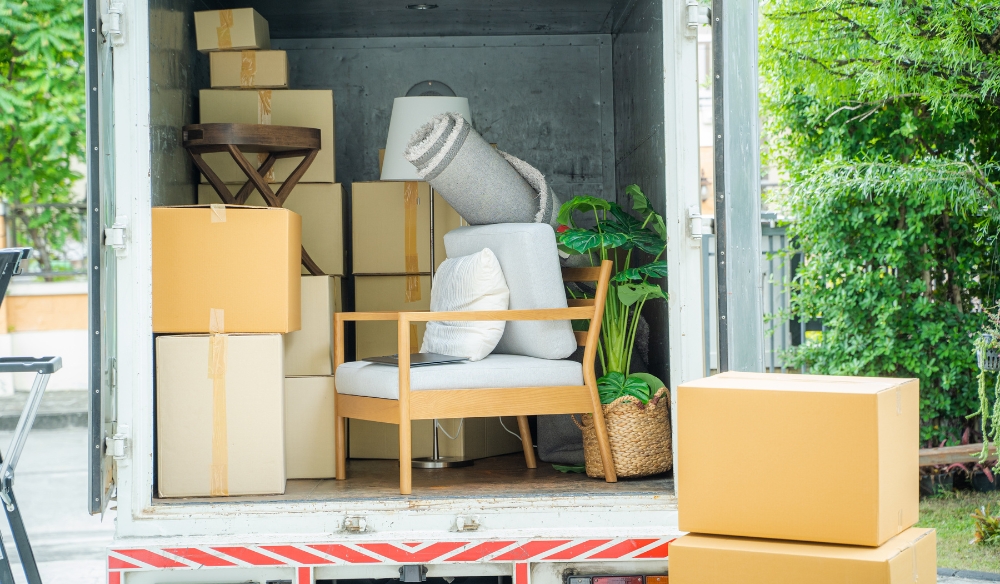
Move with Success Today!
In conclusion, this article is your go-to resource for making your next move a breeze. With practical tips and expert advice, you’ll have all the tools necessary to pack efficiently and ensure a smooth transition to your new home.
Say goodbye to moving stress and hello to a successful move with this comprehensive guide!



